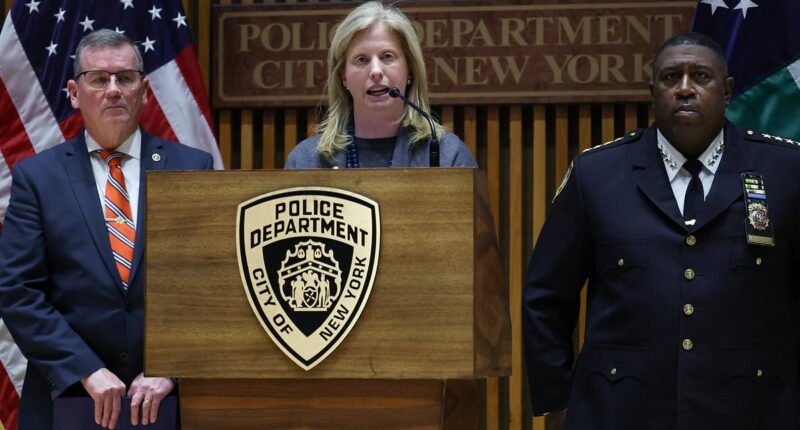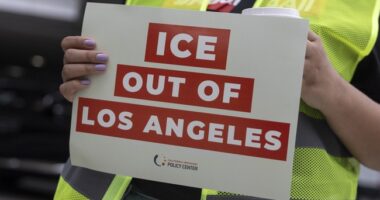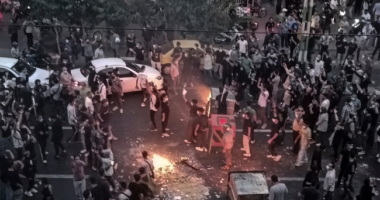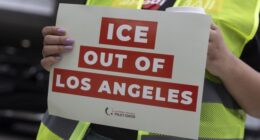
The search for the person who killed UnitedHealthcare CEO Brian Thompson has entered its third day with no signs of slowing down.
Despite carrying out the bold attack in a highly monitored city, the killer has managed to escape capture so far.
Thompson, aged 50, was fatally shot outside the New York Hilton Midtown Manhattan early on Wednesday by a masked individual who approached him from behind, shot him multiple times, and then fled the scene.
Although the picture which has emerged since is one of a meticulously pre-planned attack, the suspect did leave some clues which many hoped could lead to an arrest.
However, almost 72 hours after the slaying, all police appear to have recovered is a partial fingerprint, a burner phone and a fake ID despite a cash reward and frenzied media coverage that has seen the suspect’s pictures blasted across the planet.
As the investigation looks towards Thompson’s inner circle in Minnesota, hundreds of tips are pouring in from across the country which police are duty-bound to follow up, the New York Times reports.
There have already been several false starts in the investigation. Police initially said the suspect was thought to have fled on a CitiBike towards Central Park.
Many remarked upon how easy it would be to scrape the data from the paid-for bikes which require a membership or payment cards to use.
However this theory has since been jettisoned, with police stating they believe the getaway vehicle was another kind of e-bike that wasn’t registered.
A major hole in the investigation is the absence of the murder weapon. Detectives have speculated that the killer used a rare World War Two gun in the shooting based on video surveillance taken at the scene.
They are now examining a firearm purchase in Connecticut which would match the suspected gun, the New York Post reported.
In New York, the search for the killer led cops to two hostels on the Upper West Side.
Police visited KAMA Central Park and nearby Fredrick Douglas, but quickly ascertained that they had the wrong location.
It has since been ascertained that the assassin stayed at the HI New York City Hostel, first checking in at the end of last month.
Surveillance footage from the premises yielded the first clearer images of the suspect’s face, however he was cautious enough not to fully remove his hood.
Officials said he checked into the hostel using a fake New Jersey ID. Background checks quickly revealed that the images of the shooter did not correspond with the ID.
Police said Thursday they found a water bottle and protein bar wrapper from a trash can near the scene of the ambush and think the suspect bought them from a Starbucks minutes before the shooting.
The items are currently with the city’s medical examiner for testing. Investigators are also still working to crack into a burner phone found at the crime scene.
Members of the public have flooded police with tips, many unfounded. Police searched a Long Island Rail Road train Wednesday night after a commuter claimed to have spotted the shooter, but they found no sign of the gunman.
The suspect has so far been careful to keep his transactions to cash-only, making it harder for cops to trace his movements.
While calculated, there are moments which have marked him out as an amateur, rather than a professional hitman, according to experts.
These include being caught on surveillance footage a nearby Starbucks in the moments before the shooting.
The grainy images were released by the cops along with the promise of a $10,000 reward for anyone with information which could lead to his arrest.
It is unclear if police have caught up with witnesses to the crime. One passing driver told Pix11 he heard the shots and turned to see the gunman as he was conducting a delivery early on Wednesday.
Surveillance footage from the scene also shows one terrified woman running for her life as the gunman opens fire.
Detectives have yet to state the motive for the crime. However, bullet casings found at the scene were scrawled with the words ‘depose’, ‘deny’ and ‘defend.’
The message is eerily similar to Feinman’s 2010 book ‘Delay, Deny, Defend’, which details ‘why insurance companies don’t pay claims and what you can do about it.’

















